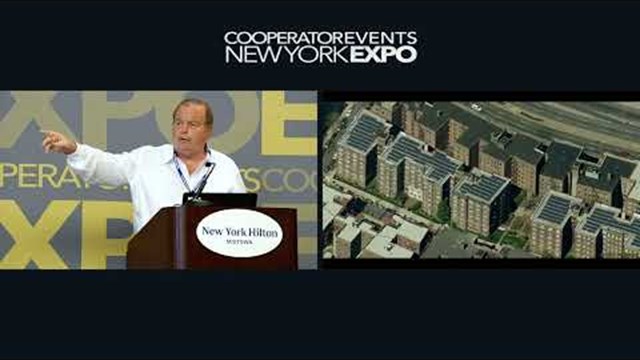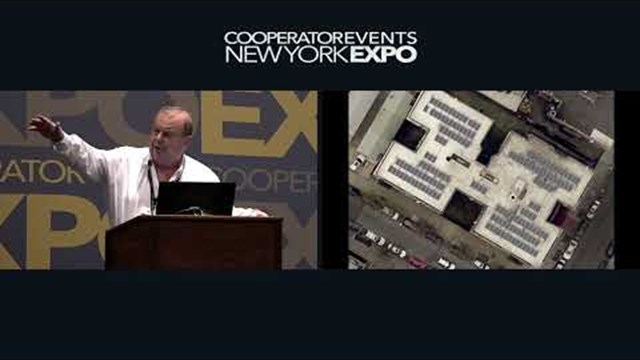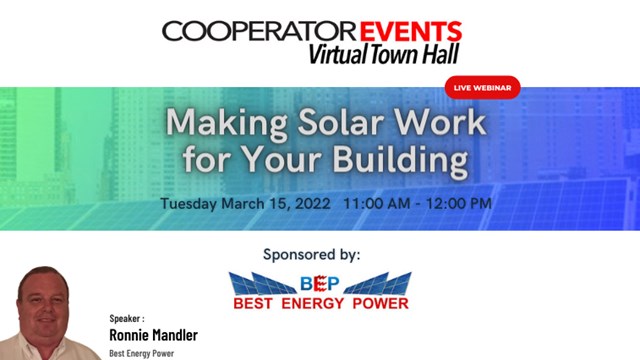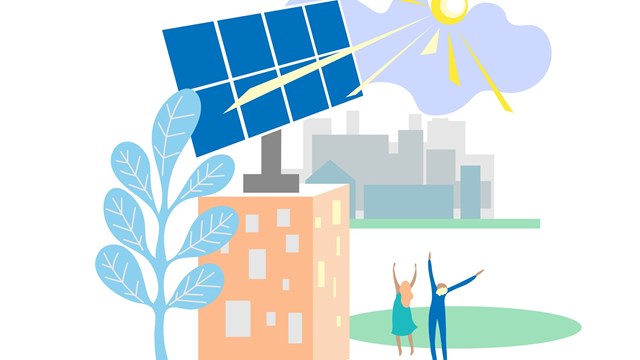
Whether you consider yourself environmentally-minded or not, green is fast becoming the new black. Everywhere you look, from billboard ads to the Academy Awards, the nation is becoming preoccupied with renewable energy and the reduction of greenhouse gases. As gas-guzzling SUVs are eagerly traded in for gas/electric hybrid cars, the move to eliminate our dependence on foreign oil is also heating up the political arena, and when government incentives come to the table, money does all the talking.
Wind and Hydro
"There are two ways you can take advantage of wind technology," says Dana Saucier, co-founder of Accent Energy, a supplier of electricity, natural gas and green energy to several states (including New York) with offices in New York City, Ohio, California, and Texas. "The first is that you can put a windmill on the building, which presents a problem in Manhattan: you may not have a clear view of the sky. The more traditional way is to tap the energy made by windmill farms in other locations."
"You can purchase this energy in different ways," continues Saucier. "You can buy energy made in New York, in the region (Northeast), or you can purchase it nationally, and even internationally."
"There are degrees of green," explains Saucier. "Wind is traditionally considered the 'greenest' of the green energy sources. Solar is another very green source. Hydroelectric is also high on the list, although some people cite the necessity to dam up rivers as a drawback, but it is green and it is renewable."
Commonly used sources, like fossil fuels, tend to be less expensive, while wind tends to be the most expensive because it is not as available as other sources. The efficiencies of the new technologies are constantly improving however, making the final cost come down little by little.
Going green is not an all-or-nothing proposition, however. Mixing green energy with commonly used sources can help a building owner or board decide on a balance between costs and the desire to move toward the idea of sustainability. "The most expensive source tends to be New York wind," says Saucier. "If you are okay buying Northeast wind, the price comes down, and if you buy from hydro and other sources, the prices will come down even further. We can consult with the board or owner about what kind of green energy they are interested in."
Tracking the percentages of households that are using green power can be hard to nail down, but according to the New York State Public Utilities Commission, as of March 2007, almost 55,000 accounts statewide are purchasing renewable energy through green power providers.
Solar and Geothermal
One of the more widely recognized, but still little used sources of green energy is the solar panel. While new building construction is making more use of the technology, older buildings are being left behind, says David Buckner of Solar Energy Systems in Greenpoint, Brooklyn. "The retrofit market has been pretty stagnant for two primary reasons: because incentives and tax credits are complicated enough to make them inaccessible, and due to the issue of net metering, which is a term that refers to the ability to roll back the meter during times of overproduction. Here in New York, there is essentially no credit for this, which hurts the incentive to invest in this type of technology."
But how exactly does solar power work? What happens when the sun isn't shining? Doesn't there have to be an energy storage system? "You never disconnect from the utility," explains Buckner. "[The solar panels] act as your battery bank. The power flows backward to the grid, which is why the net metering is an issue. If the panels are ever not producing everything that you need the power will not go out, it'll just draw from the grid. They work in conjunction."
The incentives to invest in alternative energies are starting to make the financials noteworthy, however. According to one New York State Energy Research and Development Authority program (NYSERDA), "If you have a 25 kW system you will get $4 per watt. The maximum is about $175 thousand on a system that may cost $400 thousand to install," says Buckner. "But depending on the type of building, you may be eligible for a federal tax credit of 30 percent, an investment tax credit. If you combine that with an accelerated depreciation that is available for solar of five years, you start to get down to close to $20 thousand. The trick is to realize those commercial business tax credits, and co-ops and condominiums tend to get hung up along the way. Some of the benefits can be passed through to the shareholders."
Capturing all of the available incentives can give the investment a six-year payback on a system that is guaranteed for 25 years, and will likely produce well beyond 40 years, says Buckner.
Mayor Michael Bloomberg is one such proponent. "Bloomberg is trying to provide a 35 percent real estate property tax abatement for going solar in the city," continues Buckner. "It's kind of interesting. At some point I start looking at all these figures and think this stuff is going to be almost free, but not all of these credits are in play yet. Bloomberg's plan is awaiting approval in Albany."
Clean energy and financial attractiveness are not the only draws for solar power, says Buckner. "One of the other benefits is that [New York City's massive consumption] is such a high usage that having the electricity generated on-site, as opposed to the energy pumped in through the grid, will really help with days where peak usage may create problems like brownouts on hot summer days. Solar is producing the most that it can, just when the city needs it the most. It takes consumption off of the grid, actually helping the electricity providers, who have to purchase power from other sources during these times."
Usually, to install a solar electricity system, there are no major changes to the electrical systems in a building. There may be minor adjustments to the electrical systems to make sure that they are code compliant, including a couple of disconnect switches, and an inverter, and a breaker. "We generally do not even need to shut the building down for installation," says Buckner. "We can just tie in on the system that is already there. It is not a very intrusive installation."
"Once the unit is installed there is minimal maintenance and they are warranteed for 25 years, with most units still producing energy after 40 years," says Buckner. "As units get better and more efficient, people may begin to swap them out, creating a secondary market for these used units. As the world gets greener, these units may become important for lower cost renewable energy ventures, in developing countries for example.
New York State needs to get better with their policy, the net metering, says Buckner. The interest is ultimately going to come down to financials and numbers, so the incentives are very important. For solar there is $50 million of state money, which is paltry compared to coal and nuclear. Renewables are not really subsidized to a fraction of what other fuels are.
Geothermal power refers to the energy that is harnessed from heat below the planet's surface. "It may not be considered green," says Saucier, because it is not really renewable. "It has become more popular with people who have larger properties. Installation involves a loop around the property, and the payback tends to be very long term."
Conservation and Efficiency
The NYSERDA incentives are enticing many building owners to make changes, offering several options including low interest loans and tax advantages. The details of each program are specific, including an approved list of vendors and regular inspections during construction.
Although recent media coverage and public interest have heightened the profile of the issue, some have been working on how to conserve our commonly used fuels for years. Jerry Pindus, chief executive officer of US Energy Group, has spent more than 30 years in the multifamily housing industry and has been on the leading edge of fuel conservation since 1978.
Although the push for renewable energy seems to have its heart in the right place, Pindus says he has noticed a lack of attention to curbing some of the excess fuel consumption and carbon emissions on systems that are not easily replaceable. "Almost all the programs that are coming out are concerned with saving electricity," says Pindus. "There are almost no incentives to get more efficient boilers."
Lessening the fuel consumed and the exhaust released by the boiler by just 15 percent with an energy management system (EMS) is the equivalent of taking 10 cars off the road.
"Most buildings in New York are controlled by the outside temperature, which is why most of them are overheated in the winter," says Pindus. "Residents adjust the heat by opening the windows, which wastes energy."
"If the boiler leaks, cold water replaces hot water and has to then be heated, which wastes energy," continues Pindus. "It also puts chemicals into the sewer." An EMS takes temperatures from sensors in different places inside the building to adjust the activity of the boiler.
Fuel delivery is another facet of the industry where inaccuracies and inflated costs are common. "Short" deliveries are harder to catch using the old method of measuring, which involves putting a stick into the tank. In an era where oil is at a premium, deliveries have a way of coming up short if they are not monitored constantly and accurately.
US Energy Group has designed products to monitor the temperatures, deliveries, usage and wasted energy, and provides an Internet service to alert a property manager or owner in the event of an inconsistency or problem.
"The cost depends on the size of the building," says Pindus. "It can range from $4,500 to $20,000 or $30,000 to have the equipment installed. The monitoring service starts at $80 per month with discounts for volume. The payback is usually one year. We guarantee at least 15 percent fuel reduction, in writing."
Although alternative energy sources are just beginning to attract mainstream attention, decades of research and study have provided various degrees of hassle-free options with invaluable long-term effects. If improving our environmental health isn't enough of an incentive, the tax advantages for going green promise to put the green back in your pockets as well.
Denton Tarver is a freelance writer, teacher and professional gardener living in New York City.









3 Comments
Leave a Comment